Varieties of furniture hinges and their purpose
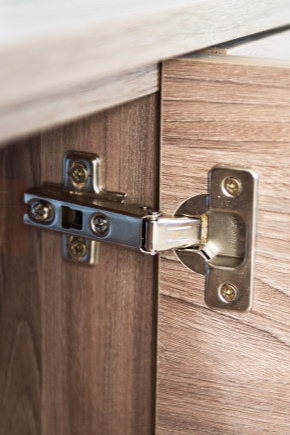
Furniture hinges are one of the most important elements of fittings, since the practicality and durability of furniture modules and their aesthetics largely depend on them. The choice of these products should be given special attention, since manufacturers produce different types of loops and each model has its own purpose. In our review, we will try to tell you about the most common types of hinges, features of their structure, purpose, and give advice on selection and installation.
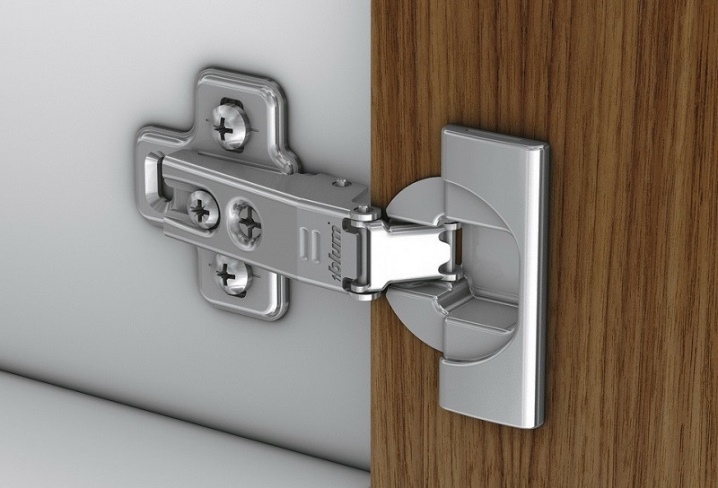
What it is?
Furniture hinges are a device that fixes the sash of the door structure to the facade of the furniture block. Different types of hinges can serve a wide variety of functions - there are simple models, the tasks of which are reduced to maintaining the opening, and there are models with a closer, they are needed for smooth closing without a sharp knock. Nowadays, when installing doors, four-hinged products are most common. They are characterized by ease of installation, durability and practicality, they can serve for a long time even with intensive use.
The design of any loop assumes the presence of a cup, strap, and also a shoulder. The hinge is attached directly to the sash with a cup, and with the help of a strip it is fixed to the furniture frame. In most cases, self-tapping screws or screws are used for installation. The shoulder is attached between the strap and the cup, respectively, takes on the role of a link. All structural parts are connected using a four-hinge mechanism.
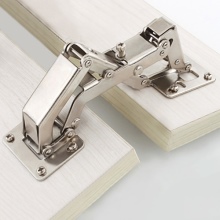

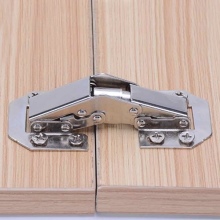
Species overview
Door fittings can have different design features, depending on the option of fixing the sash and the design features of the product itself. On sale you can find hidden, hidden, as well as cut-in and equal-lying hinges. Products are end, reinforced or decorative. Buyers are offered hinges for false panels, for folding modules, products with and without springs, as well as transformers. To choose the optimal model, you need to familiarize yourself with the main technical and operational parameters of each type.
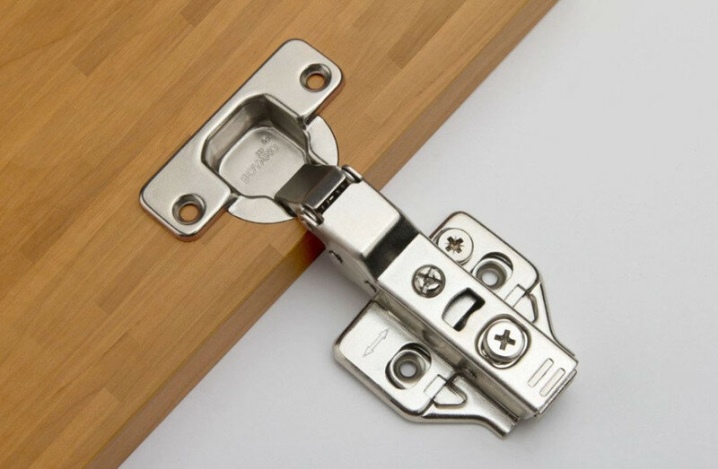
By the way the door is fixed and the device
Let's take a closer look at the main varieties.
- Overhead and semi-overhead. Hinges of this type are four-pivot mechanisms that have become widespread among users. They are usually mounted on cabinets with swing doors. High strength has become a characteristic feature, so the devices are easily mounted both on the doors of compact structures and on the doors of volumetric furniture blocks. Thanks to well-chosen hinges, the sashes will swing open at a right angle, this solution prevents the sash from tilting and helps to maintain them in one position. It is visually difficult to notice the difference between overhead and semi-overlay hinges, but they are available. If you take a closer look, you will notice that the shoulder of the overhead structure has a rather impressive bend - a similar feature allows the shutters in the open state to obscure only half of the end of the facade of the wall. If we are talking about overhead hinges, then here the end remains completely closed.
That is why semi-overhead mechanisms are usually used exclusively in cabinets with three doors.
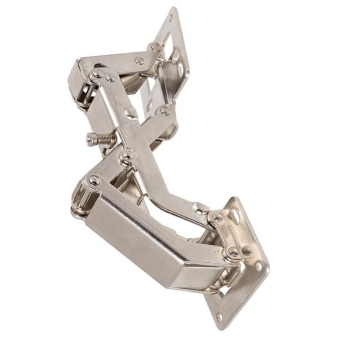
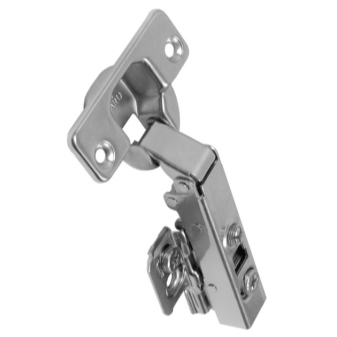
- Royals. These hinges visually resemble metal plates.They are attached to each other by hinges. As a rule, they are fixed in such a way that one edge of the sash is completely covered. On visual inspection, they can sometimes seem impractical, but piano hinges are able to hold even the most massive board firmly. It is no coincidence that they got their name due to the fact that they usually fix a massive piano lid. These products are often referred to as inverse products, as they cause the largest door opening. Hinges of this type are fixed both at the end of the wall and from the inside.
Such mechanisms were widespread during the Soviet era; they are extremely rare in modern products.

- Card. Their design is very similar to piano hinges, but they are more practical, because such hinges are usually placed not along the entire length of the sash, but only in several areas. Card hinges are widely in demand when installing entrance doors; they are rarely found in furnishings, only in bulky structures made of solid wood with heavy doors.
These days, card hinges can be seen, perhaps, exclusively in old-style furniture, on heavy bedside tables and all kinds of vintage chests.
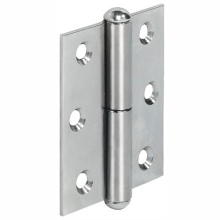
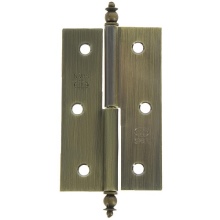

- Internal. The use of such hinges makes sense only when it is necessary to drown the sash into the cabinet leaf. In this case, the opening angle of the opened door does not exceed 90 degrees.
Such designs are placed in pencil cases or on heavy doors.
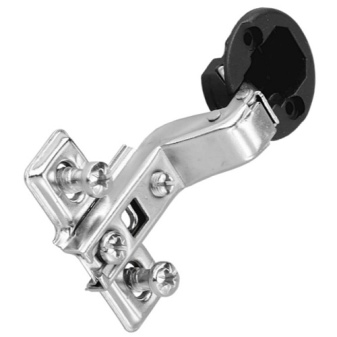
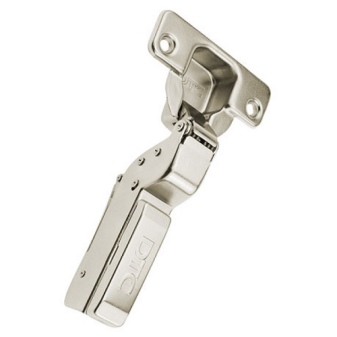
- Corner. These hinges are available in two versions:
- card - provide maximum opening of the doors; the opening angle can be 15, 60, 135, 165 and 270 degrees, they often have a negative opening angle, so they are rarely used for pieces of furniture;
- furniture - are widely used in wardrobes of dressing rooms and compact kitchen sets.
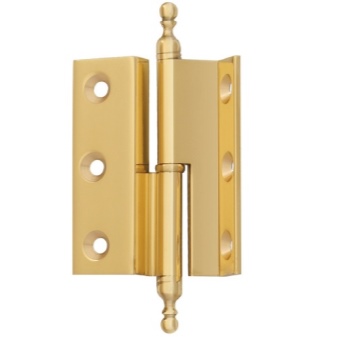
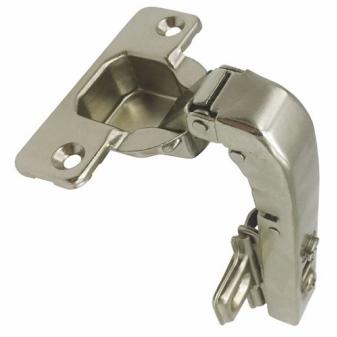
- Secretarium. Combines card and overhead hinges. The main difference from all other similar models is the compact size. These hinges are ideal for horizontal swinging leaves.
Secret hinges do not just attach to surfaces, they cut directly into the structure.
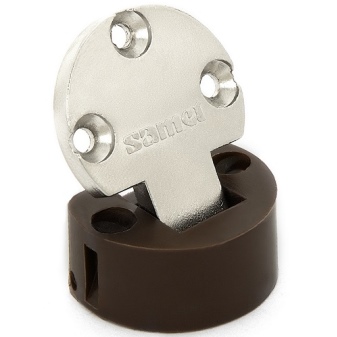

- Mezzanine. Such designs are also in demand for modules with horizontal opening. However, they have slight differences from the previous type. In particular, here the mechanism implies the presence of a closer and a lever, so such a door can be opened up without any difficulties.
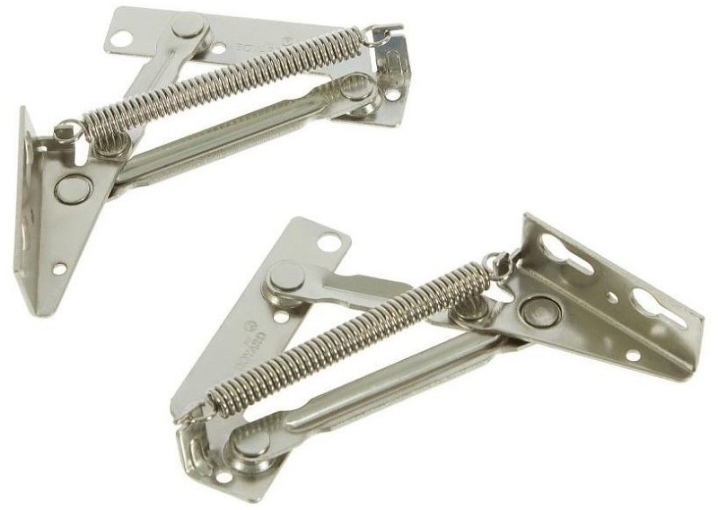
- Adit. They are optimal in a situation where it is necessary to fix a sash with a blind facade.
They provide maximum sash opening.
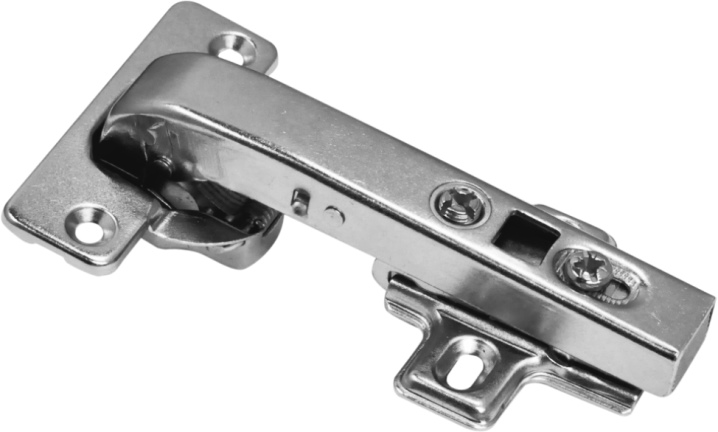
- Lombard. They look like mezzanines, the only difference is that they crash into the door block using the chopik mechanism.
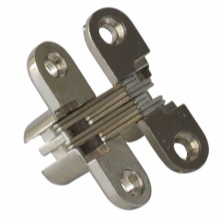
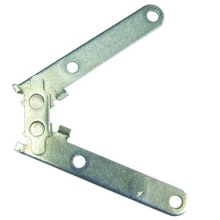
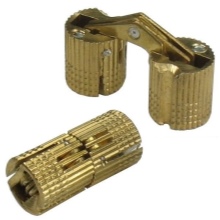
- Pendulum. These hinges provide the ability to open the sash up to 180 degrees. Structurally, they are a bit similar to card hinges, but with the difference that they have only a few hinged mechanisms. They are fixed to each other with a plate, so the door can swing open in any direction without hindrance.
Such hinges are not widespread; they are quite rare in household furnishings.
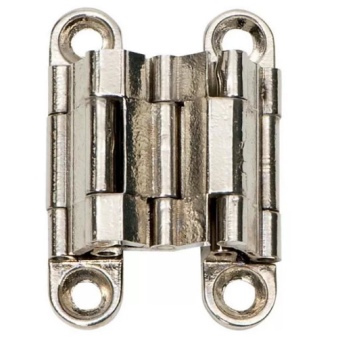
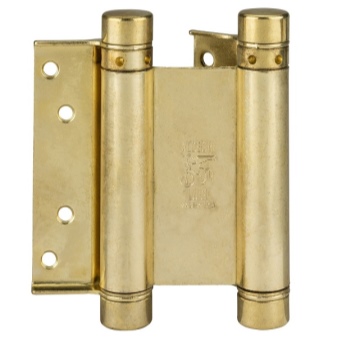
- Calcaneal. They are one of the varieties of pendulum loops. They are mounted at the top, bottom and corners of the sash. Typically, these elements are found on glass fronts, as well as on thin kitchen cabinet doors.
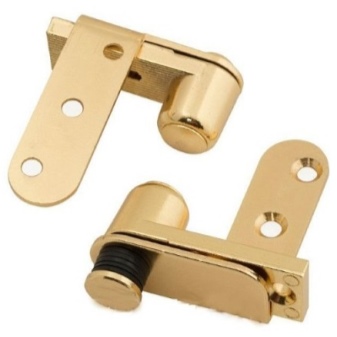
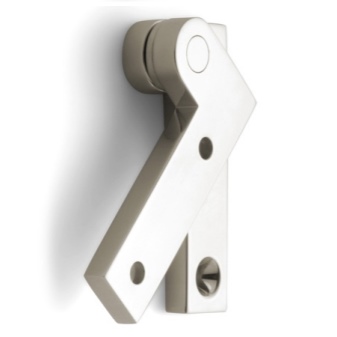
- Carousel. Folding hinges are popularly known as crocodiles. The name is explained by their non-standard appearance, reminiscent of the open mouth of a reptile. The model is optimal for use on any folding doors, mainly installed in kitchen sets.
A distinctive feature of this design is that one door leaf opens without overlapping the other.
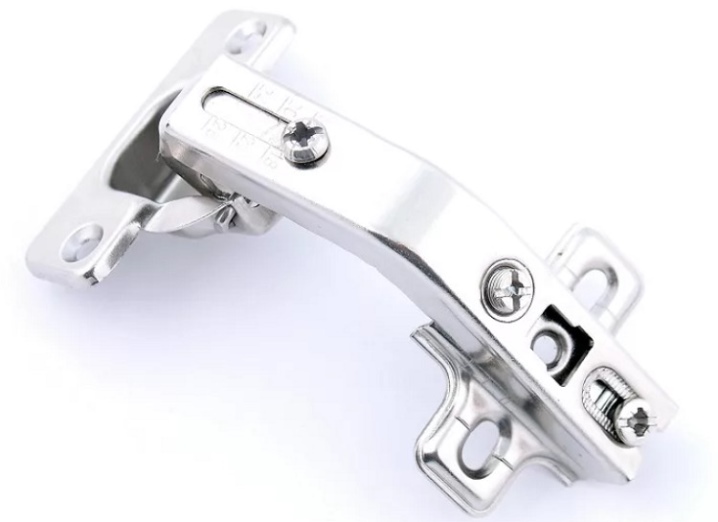
By installation method
It is worth highlighting several types.
- Slide-on. Structurally, this loop looks like a collapsible device. The strip can be attached to the door separately from the main elements of the hinge, and then the lever can be fixed to it with screws. If necessary, the user can control its location relative to the level of the bar.
- Key-hol. This loop visually resembles the above-described option, but with the difference that in the fixation zone it resembles a small keyhole in its appearance. This allows a pre-screwed screw to be pulled onto the lever.
- Clip-on. The original model, in which a latch is provided for engaging the lever with the bar.
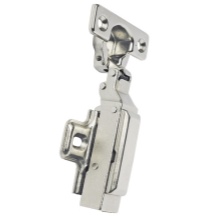
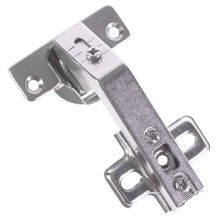
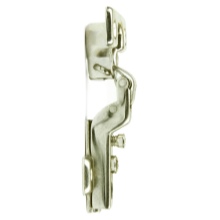
Rare
There are some other types of fittings that are produced much less frequently. However, they sometimes come with furniture, so you should have a basic understanding of their performance.
- Framework. These hinges are mostly indispensable for glass facades with a wooden frame.
- With overhead fastening method. As a rule, to fix the four-hinge hinges, it becomes necessary to form a recess by means of milling equipment directly in the furniture array. If for one reason or another it is not possible to do this, then you can purchase hinges with overhead fasteners. Their only drawback is the impossibility of adjusting the sash without dismantling the mechanism.
- For glasses. This group includes all types of hinges used to mount sashes with a mirror or glass surface. They are overhead as well as internal.
- Pin. Visually similar to standard type card hinges. However, instead of plates, special pins are used here.
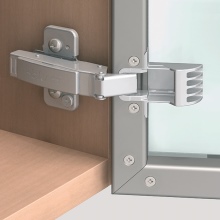
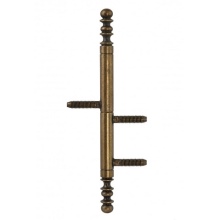
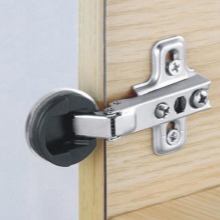
Materials and design
Furniture hinges are made from various metals. The main requirement for materials is their ability to hold their shape for a long time and not deform even under the strongest weight loads. The metal must be resistant to long-term use. The most widely used models are made of stainless steel and brass. They are characterized by a long service life and are almost impossible to break. Besides, these metals are not subject to rust and deformation. Conventional steel is used a little less often, since it oxidizes when exposed to moisture. Such models are cheaper, but have limited application, in particular, they are not recommended to be installed in complexes located on the street or in rooms with a high level of humidity (kitchen, bathroom, sauna).
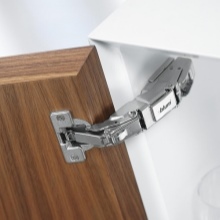
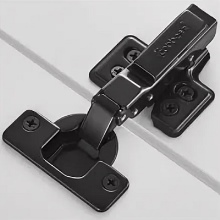
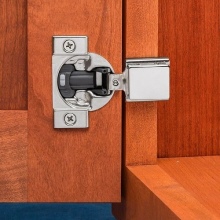
Dimensions (edit)
There are the following typical sizes of four-hinged furniture hinges:
- typical - the diameter is 35 mm;
- with a 12-14 mm deep cup;
- distance from the cup to the edge of the facade - 17–20 mm;
- the distance from the center of the cup to the lower / upper edge of the facade is within 100 mm;
- the distance from the cup to the valve is within 4–5 mm;
- the distance between the fixing holes is 45 mm and 52 mm;
- distance from the mounting hole to the wall of the furniture module - 37 mm;
- width - from 60 to 75 mm;
- product length - up to 120 mm.

How to choose?
Correctly selected furniture fittings will guarantee the long-term use of the furniture module, so you need to pay attention not only to the price of the product, but also to its functional characteristics, namely:
- be sure to specify the method of opening the sash and its dimensions; so small facades need compact sheds and vice versa;
- before purchasing the product, you must carefully examine the proposed loop, the presence of cracks, dents, chips and other defects is not allowed;
- furniture fittings are subject to mandatory certification in our country, so ask for documents confirming compliance with sanitary and technical standards; reliable sellers should always have them in stock;
- choose only specialized stores that offer customers original goods; qualified sales managers will help you choose the optimal style model and provide all the necessary information about the features of installation and maintenance of devices;
- check if the kit includes door closers - modern furniture hinges are available in two versions - with door closers or not; the action of this device is comparable to a shock absorber, it provides the most silent and smooth closing of the doors, prevents the door from hitting the butt end; the undoubted advantage of models with such an addition is an increase in resistance to mechanical stress, protection against oil leakage, as well as an increase in the overall life of the furniture; hinges with a closer belong to the category of adjustable, respectively, they provide the most tight fit of surfaces to each other;
- measure the diameter - for thick facades, it is better to give preference to models in which this parameter corresponds to 45 mm, and spring hinges of the return stroke would be a good solution; for thin ones, mini-fittings are suitable.
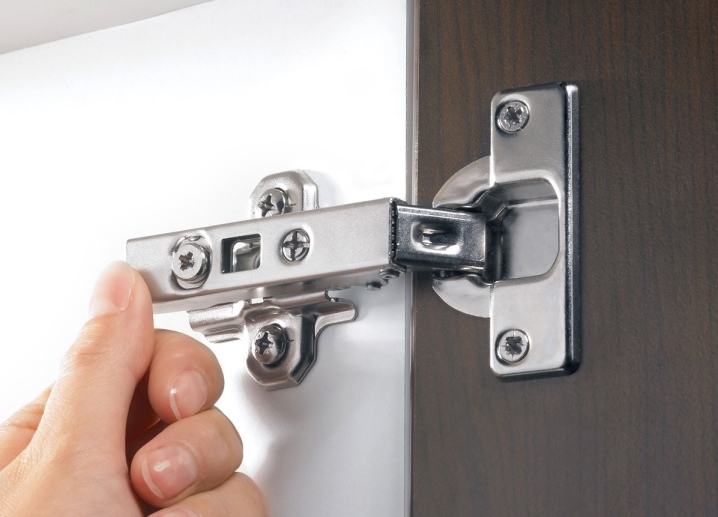
How to fix and adjust?
To install the furniture hinge, you will need the following tools:
- ruler with pencil;
- drill;
- screwdriver;
- level;
- cutter;
- screwdriver;
- screws.
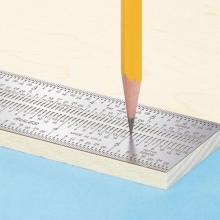
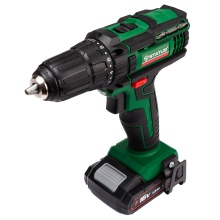
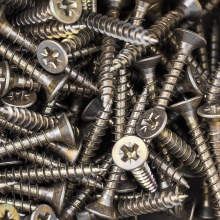
The work sequence includes several steps.
- Markup. The location of the hinge is indicated, it is necessary to retreat from the edge of the facade by 10-15 cm. The distance between the canopies in this case should be at least 50 cm.
- Hole formation. The drill forms neat holes for the holes in exact accordance with the marking. For ease of execution, you can lay the door on a solid horizontal surface.
- Installation. The prepared hole is placed in the loop without adjusting its location relative to the height parameters of the furniture facade. Further, areas for self-tapping screws are marked, the canopy is screwed on.
- Door installation. First, the markup is performed, all sites are fixed, the facade is hung. Next, the two parts of the loop must be connected together. This is usually done with self-tapping screws, twisting them, it is necessary to adjust the position of the hinge in relation to the cabinet.
- Fixation correction. Upon completion of the installation of the facade, you need to adjust the hinges in all three directions - horizontal, vertical, as well as relative to the installation depth.
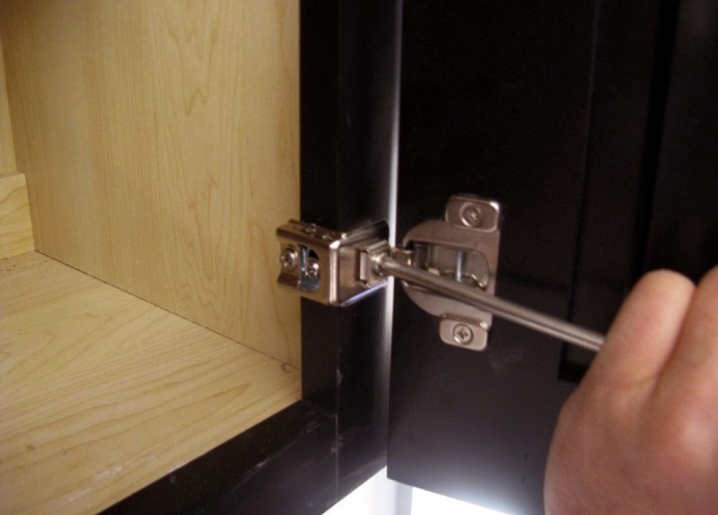
You can learn how to easily and quickly install furniture hinges from the video below.













The comment was sent successfully.